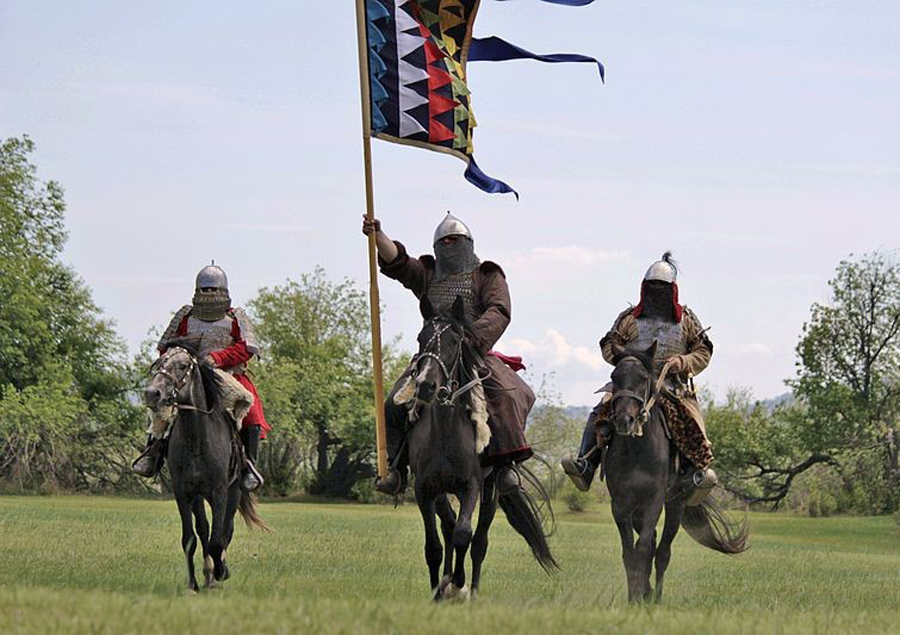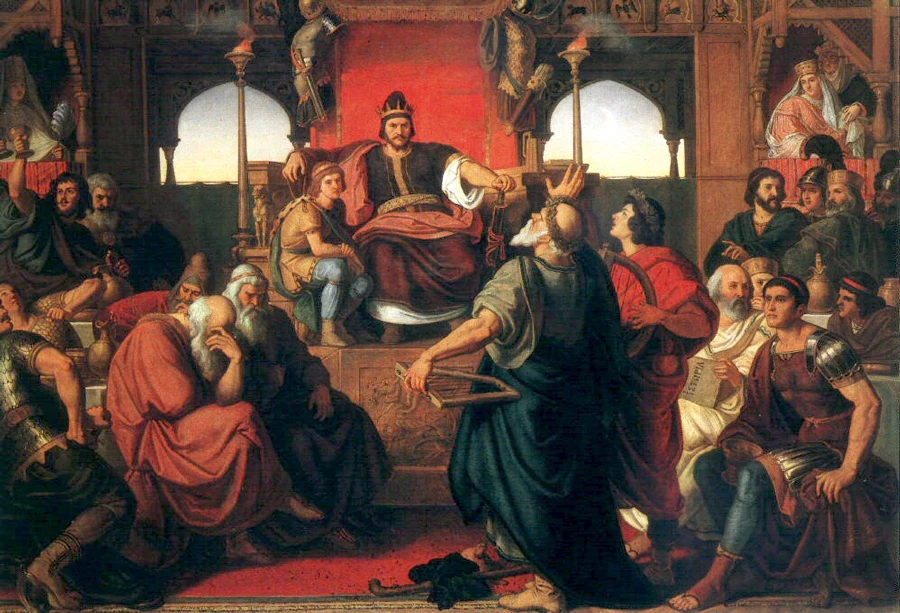Human history is littered with lost cultures and forgotten great leaders. Many are unfamiliar to the average person, but on rare occasions their actions earn them a place in our modern consciousness.
The Vandals, for example, sent such a shockwave through the ancient world when they sacked Rome in 455 AD that the very word became associated with wanton destruction. The Visigoths gave rise to an entire ethos which echoed down the centuries, from Gothic architecture to today’s Goth counterculture.
One of the most prominent of these peoples, seen as enemies of the free world by those who documented them, was Atilla the Hun. His name is almost universally recognized but, other than vague associations of hairy barbarians and lots of pillaging, most would not know anything about the man himself.
Who was this terrible king of the Huns, known to the Romans as Falgellum Dei, the Scourge of God? And what did he do to earn his infamous place in history?
The Formidable Huns
Attila, king of the Huns ruled between the years 434 and 453, for the first decade alongside his elder brother Bleda. During his reign, aided in part by the declining and weak Roman empire, he carved a bloody swathe through Rome’s Balkan provinces, Greece, Gaul, and Italy herself.
Almost from the first it was his reputation which defined him, and information on the man himself is strangely limited. Roman writers generally refer to Atilla through his actions, the destruction he brought to the heart of their empire, and it is this aspect of the man which has passed into history.
The Huns were a nomadic people, known for their unstoppable archers on horseback, who had pushed into Europe in the late 4th century, attacking the Alans and the Goths and driving them, in turn, further west. Atilla was born into a changing world.

Hunnic warriors were accomplished horsemen (Аркадий Зарубин / CC BY-SA 3.0)
The Huns had also encountered the Romans before. They had been used as mercenaries in Roman armies fighting for position and usurpation within the empire, and had negotiated with Rome previously. However, while the Romans were ready for the Huns, they were not ready for Atilla.
Crossing the Danube and invading the Balkans in 441 AD, Atilla and his brother caught the Roman army at a disadvantage. The eastern Roman emperor Theodosius had concentrated the Roman army on north Africa and the Vandals, leaving eastern Europe relatively undefended.
The Huns at this point might still have been bought off, but Theodosius felt the Roman army could defeat them. Newly armed with siege weaponry, the Huns advanced into the heart of the Roman empire, massacring towns and cities as they went.
Don’t Mess With Atilla
The Romans were forced to buy them off and Atilla and his brother retreated with a promised payment of 4,400 pounds (2,000 kg) of gold, along with a yearly tribute to be paid. The Romans paid, for a time, but in 447 Atilla, now sole ruler, crossed the Danube again.
This time there would be no stopping the Huns. They seized a vast territory in what is modern day Bulgaria and Turkey, cementing themselves as a European presence. But their push westwards, when it came, was not initially against Rome.
Rather, Atilla sought Roman assistance for a push against the Visigoths in modern day France. But, as sometimes happens in history, a chance event changed the world forever. The western Roman emperor Valentinian’s sister, Honoria, had sent a letter to Atilla for help escaping her marriage, and she included her engagement ring in the message.
Atilla interpreted this as an offer of marriage, and accepted on the condition that half the western Roman empire be given to him as dowry. Although this was strenuously denied by Valentinian, Atilla felt that he now had a grievance against the Romans, and a claim to the empire.
But the Visigoths came first, and Atilla’s 451 rampage through ancient Gaul reached as far as the city of Orleans. Paris was allegedly only saved by the prayers of the Christian pious, and Atilla was only stopped when the Visigoths and Romans allied and defeated him, forcing a retreat.
But Atilla was back the next year, pushing into the heart of Italy towards Rome herself in pursuit of his claim to marriage. He destroyed the northern Italian town of Aquileia so completely it was unrecognizable, and it is entirely possible that Atilla could have taken Rome, but he instead negotiated peace and retreated for the year.
It was his last advance. In the early months of 453 AD Atilla the Hun died.
A Natural Death or a Murder?
Early in 453 AD Atilla married again, and his bride was a young and beautiful woman, named Ildico. What actually killed Atilla is shrouded in mystery, but the 6th century writer Jordanes wrote that Atilla died naturally, perhaps from a nosebleed, after the feast.

The Death of Atilla the Hun (Ferenc Paczka / Public Domain)
It seems that he enjoyed his wedding to the fullest and was heavy with wine. So, when he lay on his back and slept, the blood rushed down his throat and killed him. He was discovered dead, but without any wound.
Atilla was buried on a triple iron, silver, and gold coffin. As with Genghis Khan centuries later, the people who built this tomb were also killed to keep the location unknown. Hence, to this day, Atilla’s tomb is lost and its location remains one of the great mysteries of antiquity.
Some have suggested that Atilla was assassinated. The Romans had been repeatedly humiliated by his attacks, but they would have found it very difficult to get close enough to the man to murder him.
His sons were ambitious, and indeed after his death the empire he had built collapsed into disorder. However it seems most likely that his death was an accident. Had he lived to fight on, Europe and the Roman empire could have looked very different.
Atilla the Man
In understanding Attila the man, historians face a major challenge. The sources of the historiography are written in Latin and Greek, who were the enemies of the Huns. The contemporaries left behind many testimonials about his life. But only the fragments of these testimonials remain to explain the life story of Atilla.
Priscus, a Byzantine historian and diplomat wrote in Greek about the history of Atilla. He was a witness to the court of Atilla, as a member of the Embassy of Theodosius at the Hunnic court in the year 449. His writing was the major source of information upon the life of Atilla.

The 19th century painting The Feast of Atilla is based on the descriptions given by Priscus (Mór Than / Public Domain)
Among other things, Priscus provides the only physical description of Atilla, who seems to have been short, broad and ugly. He was said to live a very simple life, eating meat and bread and using a cup of wood while his guests drank from goblets of silver and gold.
He was also simple in his dress, wishing only to be clean at all times. The sword he used, his shoes, and the harness of his horse were also simple. These personal habits speak of a man of dedicated purpose who would resist being brought off with trinkets from Roman emissaries.
But Priscus is silent as to Atilla’s motivations and his inner thoughts. Could Atilla have conquered the Roman empire? Or could he have saved it, defending Rome against the Vandal attack two years after he died?
His sudden death changed the world forever. But what he would have done, had he lived, is impossible to know.